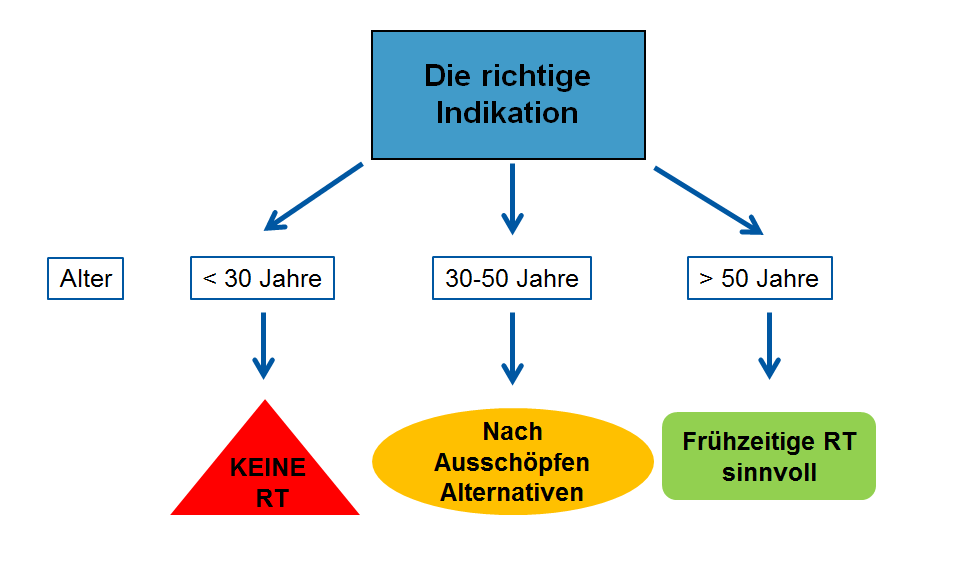Examples of this are the commonly known tennis elbow or heel spurs, or the resulting inflammatory change in the sole of the foot (plantar fasciitis). These conditions can be caused by chronic overuse (tennis elbow), obesity, prolonged standing or poor footwear (heel spur). Chronic plantar fasciitis is often caused by a misalignment of the foot (abnormal pronation of the foot). The resulting stretching of the foot tendons (plantar aponeurosis) leads to microtrauma, especially in the area of the calcaneus tendon, which ultimately promotes the development of a heel spur.
Our most important goal is to offer you the best possible treatment with the best possible results. In our clinic, we regularly treat patients with benign diseases and have been able to gain very good experience in this area. We work closely and trustingly with specialists from other disciplines such as orthopaedists, orthopaedic rheumatologists, rheumatologists, surgeons, ophthalmologists and ophthalmologists. We also regularly exchange information with leading centers and renowned radio-oncologists in this field.
Effect of radiotherapy
Clinical studies have confirmed that even very low-dose radiotherapy can be an effective treatment for benign diseases (Niewald et al). Heel spurs or chronic Fasciitis plantaris is treated with 3 – 6 therapy sessions, the radiation dose is extremely low at 0.5-1 Gray (Gy) each. This results in a treatment duration of approx. two weeks, which can be repeated after six weeks if necessary to achieve better results.
Studies have shown improvements in pain symptoms of around 85% immediately after treatment and up to 90% after six weeks (Ott et al). These values correspond to our many years of positive clinical experience and are all the more remarkable as many patients come to us late and a large number of previous treatments have not been successful.
These radiation treatments are generally very well tolerated due to the low dose and hardly any side effects are expected. In the following we would like to give you an overview of benign diseases which we regularly treat in our daily practice and which represent a good indication for radiotherapy:
Risks of radiotherapy
After radiotherapy, there is a slightly increased risk of developing an ulcer induced by the radiation. For this reason, patients with benign diseases are preferably irradiated in our department from the age of > 50 years. Between the ages of 30 and 50, conservative measures should be fully exhausted beforehand (see diagram).



